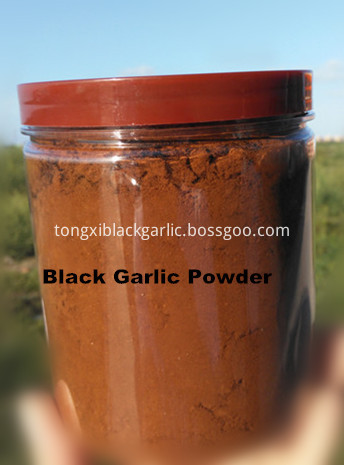Roses are an important spice plant with high economic and ornamental value. With the development of economy, the cultivated area is becoming larger and larger. Roses are clustered shrubs. The four-year-old plant cluster is 150cm high and contains more than 120cm of clusters. The lines are closed and the rows are connected. The air under the forest is moist, creating suitable environmental conditions for the growth of edible fungi. Using the shallow-grass cultivation method, it is used to make oyster mushrooms and puffball mushrooms between the rows of roses. The natural shade of roses is used to produce low-cost and high-efficiency fruits. It can also provide organic fertilizers for roses to form a benign cycle. The cultivation techniques are now described as follows: 1. The material strains are f1, side 5, and Pleurotus ostreatus; the culture material is made up of an equal mixture of cottonseed husks and corn cobs; the corn cobs are pulverized with a pulverizer and then added to the mixture. Gypsum 2%, lime 1%, calcium superphosphate 1%, urea 0.2%, 40% carbendazim 0.2%, mixed, add water to 65% moisture content. Second, sowing (a) the whole crop is carried out in the four-year-old rose row. Double row intercropping, row spacing 50cm, mushroom width 50-70cm (depending on the row spacing of roses), depth 15cm, long and suitable. Fill the mushroom with water once. After the water is infiltrated, disperse lime powder evenly in the mushroom borer, dispose the lime powder in the mushroom borer, and arrange the bricks and rows vertically every 1.5m in the middle. (b) The planting time is planted twice a year, the first time in mid-March, and the second time in late September. (3) The method of seeding shall be layered sowing method, with a material thickness of 12cm, sowing in two layers. Firstly lay the material at the bottom 3.5cm, lightly compacted with a wooden board, sowing the first layer of bacteria, strain thickness 0.6cm; on the strains and then spread material thickness 5cm, after the second layer of bacteria broadcast compaction Add enough material and compaction. The amount of bacteria is 1/10 of the weight of the culture. 3. Management (a) After the sowing stage, the material surface immediately covers the plastic film and the film is covered with soil. In March, the cover soil is 5cm thick. In September, the cover soil is 7cm thick. The temperature inside the crucible should not exceed 28°C. This phase takes about 25 days. (b) After the mushroom bud appeared in the mushrooming stage, immediately lift the film and put it on a small plastic shed. Cover it appropriately with shade. At noon every day, the film is ventilated at both ends for 10 minutes. When the material surface is dry, a small amount of water is sprayed. (3) The mushrooms that germinate for the first time after the first tidal mushroom is harvested are known as the first tidal mushroom. After harvesting the first tidal mushroom, it is necessary to cultivate two tidal mushrooms. First clean up the material surface, remove rotten mushrooms, dead mushrooms, the old fungus membrane with a knife cut, dry two days later, spray water humidification, catch a plastic shed and appropriate shading, and other management measures with the mushroom stage. IV. Economic Benefits The equal mixture of cottonseed husks and corncobs is used as the culture material of edible fungi, and the biological efficiency can reach 90% or more. It can be cultivated twice a year. It can produce 7000kg per mu and the net income can reach over 10,000 yuan. , which is 3-4 times the income of single planted roses. The cultivation of edible fungus waste can be used as an organic fertilizer for roses to increase the yield of roses, create a virtuous cycle, and produce greater economic benefits. V. Relevant issues (1) Seeds can be sowed in March, April and September. May, June, July and August are not suitable for sowing. Therefore, when the temperature is too high, bacteria can be easily infected. , causing rotten material, rotten mushrooms. October can also be planted, but should not be late as soon as possible, and should pay attention to late insulation. (b) The culture materials should be selected from fresh, mold-free, non-polluting culture materials. Cotton seed husk is the best material for culture, but the cost is higher; the equal mixture of cottonseed husk and corn cob is not significantly different from pure cotton seed hull in biological efficiency, the cost is low, and the corn cob is easily obtained, so the production On the same mixture of cottonseed husk and corncob is appropriate. Pure soybean stalks and pure corn cob can also be used as culture materials, but the yield is lower, which is 80% and 70% of the above income respectively. When using pure corn husk as culture material, the urea dosage should be increased by 50%. (C) Management mushroom must be disinfected, in the organic matter content is high and heavy to the first use of carbendazim disinfection and sun exposure for more than two days, and then sprinkle lime powder. During the entire cultivation period, we must always pay attention to the material surface and timely remove contaminated culture materials and susceptible mushrooms.
Black Garlic Powder is extracted from black garlic, it can be used in the production of black garlic cookies, capsule, baked goods, etc.
Black Garlic Production Process
Fresh
organic garlic → Cleaning → Dehydration → Clip → Outfit fermentation
dish → Fermentation room → Fermentation → Booth cool room → Ripen →
Sterilization room → Black garlic sorting room → Inner packing → Outer
packing → Black garlic storeroom

Black Garlic Powder
Black Garlic Powder,Organic Black Garlic Powder,Pure Black Garlic Powder,Black Garlic Extract Powder
Zhucheng Tongxi Commercial And Trade Co.,Ltd. , http://www.blackgarlicgroup.com
